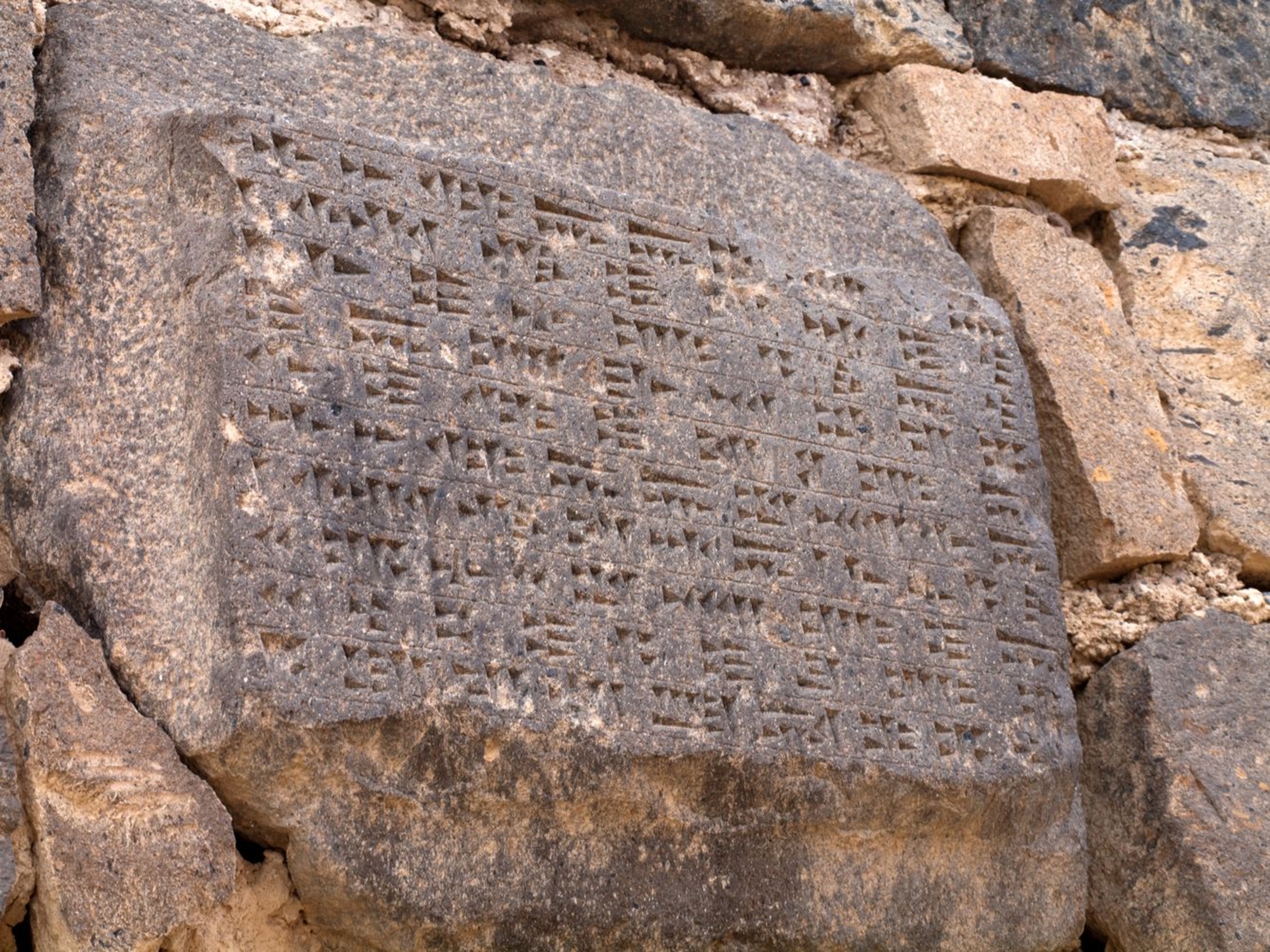
- Home
- The Eighth Campaign of Sargon II
- The Assyrian view of Urartu
Urartu is the name given by the Assyrians to the powerful confederation of the Biainili, (Urartu in the Urartian language). The term Uruaṭri is used in inscriptions of the Assyrian king Salmanazar I (1274-1245) and refers to a territory in eastern Anatolia composed of high plateaus, mountainous peaks, plains and hundreds of lakes. It is also traditionally called the land of the Nairi in the cuneiform sources of the second millennium BCE.
The sources
The history of the Urartu is known mainly through the Assyrian and Urartian royal annals and inscriptions, and a substantial body of epistolary sources, which have much to tell us about the relationship between the two empires, and particularly their diplomatic ties. The best source of information, however, is the archaeological excavations conducted in Armenia, eastern Turkey, northern Iran and, to a lesser extent, Iraq and Georgia, which have also considerably improved our knowledge of the Biainili.
The Urartian state
The state of Urartu emerged in the 9th century BCE and became a major political power strong enough to rival the neo-Assyrian Empire. Initially centred around the Lake Van Basin, its territory, from the 8thcentury, covered an area stretching from eastern Anatolia to the region around Lake Urmia.
The state was a political alliance of several clans federated around a reigning family. At the heart of this confederal arrangement was the army led by a warrior king who conducted an expansionist military policy. The territorial gains and economic advantages mostly benefited the kingdom's leading families. These families sourced their wealth from the vast regions they administered, a share of which was claimed by the crown. The mining of local metal deposits led to the development of bronze metallurgy and, to a lesser extent, iron metallurgy. Their mastery of metallurgical techniques enabled them to produce high-quality weapons. Archaeologists have unearthed a great number of weapons including poniards, daggers, swords, arrowheads, arm guards, armoured skirts, shields and helmets.Urartian rulers led tens of thousands of heavily equipped infantrymen and cavalrymen into battle. They also possessed the most formidable calvalrymen of the ancient Near East.
The triumph of Urartu
Between 830 and 743 BCE, Urartu carved out an empire and became without doubt the leading military power in the Near East. At its peak, the empire covered a vast swathe of land between the southern shores of the Black Sea, the high valleys of the Tigris and the Euphrates rivers, Lake Sevan and Lake Urmia.
In 858, Salmanazar III (858-824) led a military campaign to the north of Assyria in an area still named the Land of Nairi. The region was then under the control of Aramu of Urartu (860?-844?), Lord of the “Nairi Sea" (Lake Van?), a major political figure who gave the Urartian kingdom its regional scope. In 832, the records speak of a second campaign led by Salmanazar III against Sarduri Iof Urartu(832-825). Despite two military expeditions, the king of Assyria was unable to prevent the formation of a state centred around the city of Tushpa, now Van Kalesi, on the shores of Lake Van. However, he did limit, for a time, its expansion south, by barring its access to Upper Mesopotamia.
However, in the 9th century, Ishpuini I (830/25-810/5) smashed through the buffer states, vassals of Assyria, seizing the land of Musasir and subjugating theland of Pershua and the land of theMannaeans. He extended the borders of Urartu to the edge of Lake Urmia. His son and successor Menua (805-788) carried the offensive all the way to northern Syria andmanaged to gain a foothold in the deep valleys of the Tigris and Euphrates rivers.
Argishti I (787-766) in turn inflicted severe setbacks on the Assyrian army. Taking advantage of a political crisis in Assyria, he launched a military expedition against his rival, moving around Lake Urmia to Mesopotamia through the Tigris Valley, directly threatening the town of Arrapha, one of Assyria’s most important administrative and political centres. The Assyrian army led by General Shamshi-ilu, the general-turtanu, contained this extraordinary breakthrough but was forced onto the defensive.
The Assyrian response
Assyria certainly played an active and decisive role in the birth of the Urartian Empire. The strategy it adopted to counter Urartian expansion was both military and political, and it completely revised its approach to dominating the region. The sovereigns consolidated the northern borders and developed a network of forts. However, it appears they mainly sought to prevent the emergence of a common border between the two states and, in particular, encouraged the formation and survival of buffer states between the two empires.
In 743, Assyria resumed hostilities and Tiglath-Phalazar III (745-726) once again pursued an offensive policy by launching a series of military campaigns to the north. He defeated a first Urartian army on the Upper Euphrates and then destroyed Urartian military establishments in southern Anatolia and northern Syria. In 735, he conducted a second campaign and pushed deep into Urartian territory, reaching as far as the ancient capital Tushpa, which he nevertheless failed to take. Tiglath-Phalazar III managed to defeat Sarduri II (753-733) and slowed the momentum of Urartu's expansion.
Although the Assyrian armies penetrated deep into Urartian territory and made remarkable breakthroughs, they almost systematically failed to take Urartian citadels, which were difficult to access and required the use of advanced poliorcetic techniques. Instead, they devastated Urartian territory, most often subjugating small intermediate settlements. This strategy was only partially effective. Although the Assyrians put a spoke in the wheels of the Urartian economy, they failed to secure a decisive victory on the ground.


